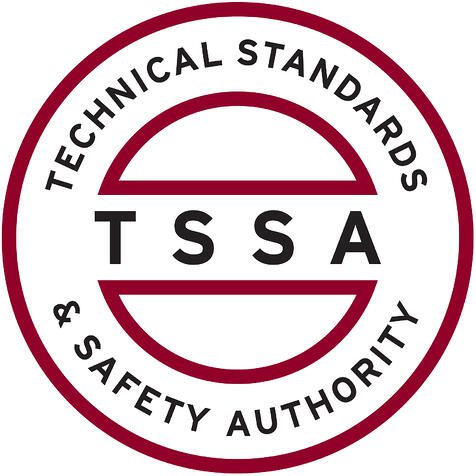
Did you know that more than 50 percent of your home’s energy costs are needed for your heating and cooling? That’s why it’s critical to have an energy-efficient HVAC system.
Furnace efficiency standards were last revised to an Annual Fuel Utilization Efficiency (AFUE) rating of 80% in 2015. This rating system measures how effective your furnace is at natural gas into heat. An AFUE rating of 80% means your furnace loses about 20% of the fuel it uses while producing heat.
In 2022, President Biden proposed new energy-efficiency standards for residential gas furnaces that would significantly reduce emissions, save homeowners money and encourage sustainability.
The updated standards are anticipated to:
- Save Americans $1.9 billion annually.
- Lower carbon emissions by 373 million metric tons and methane emissions by 5.1 million tons over three decades, the equivalent of what 61 million homes emit each year.
Starting in 2029, the updated rule would demand all new gas furnaces to feature AFUE ratings of 95%. This means furnaces would convert nearly 100% of the gas into usable heat.
So what does all of this mean for your existing furnace in 2023? For the time being, not much, as the proposed rule won't go into effect until 2029 at the earliest and will not affect furnaces that are already in use.
But if you are considering furnace replacement in soon, highly energy-efficient furnaces are already available. Learn how these furnaces can help you save on energy bills now.
Guide to Condensing Furnaces
How Condensing Furnaces Work
A condensing furnace is a type of heating system that uses a secondary heat exchanger to collect wasted heat from the furnace's exhaust gases. This decreases the extent of energy wasted, increases energy efficiency and lowers carbon-monoxide emissions. It also requires less natural gas to generate the same volume of heat in comparison to other types of furnaces.
How Condensing Furnaces Differ from Non-Condensing Furnaces
The primary difference between a condensing furnace and a non-condensing furnace is condensing models use a secondary heat exchanger to collect any wasted heat from its exhaust gases, while the latter does not.
Equipment Lifespan
The life span of a condensing furnace is dependent on the brand, model and other factors. Generally speaking, a condensing furnace will last between 10-20 years with sufficient maintenance and regular service. If you don’t schedule routine maintenance, the equipment may have a significantly shorter life span.
Why Condensing Furnaces Are More Expensive
For the most part, condensing furnaces are more require a large upfront cost than non-condensing furnaces. This is because of their increased efficiency and the additional features needed to capture any wasted heat from its exhaust gases. However, the additional energy savings can frequently cover the cost of purchase. So ultimately, it may be worthwhile investing in a condensing furnace.
Guide to Variable-Speed Furnaces
Variable-Speed Furnaces: What They Are and How They Work
A variable-speed furnace can fine-tune its fan speed to minimize the energy necessary to satisfy the heating preferences of your home. It runs at a slower speed until it notices a drop in temperature and then ramps up to generate more heat. This [precise fan is a lot more efficient than conventional furnaces, as it only consumes the minimum amount of energy needed to heat your home, resulting in more savings on your utility bill.
Many variable-speed furnaces are condensing furnaces, although a handful are available in non-condensing models with lower AFUE ratings. If a manufacturer wants a furnace to be classified as a condensing furnace, it must offer an AFUE rating of 90% or higher.
Do Variable-Speed Furnaces Run Constantly?
A variable-speed furnace doesn’t need to stay on all the time. Alternatively, it runs at different speeds based on the temperature in your Dresden home as well as the amount of energy it uses to reach that temperature.
When sufficient energy is required to maintain your set temperature level, the furnace will shift to a higher speed to manage the higher demand. Doing this will ensure more efficient heating in your home while also offering quieter operation.
Guide to Two-Stage Furnaces
Two-Stage Furnaces: What They Are and How They Work
As the name suggests, a furnace with two levels of operating (high or low) is called a two-stage furnace. During the low stage, the furnace performs at a reduced capacity as a way to maintain the chosen temperature at your home more efficiently. During the high stage, the furnace will instead run at maximum capacity to satisfy demands for increased heat. With a two-stage furnace, you can experience greater energy efficiency and balanced temperatures throughout your home.
While two-stage furnaces are highly efficient, not all all types are condensing furnaces.
Does a Two-Stage Furnace Run All the Time?
A two-stage furnace should not run constantly. In the low stage of operation, the furnace performs at limited capacity in order to maintain a desired temperature more efficiently within your home. When more energy is needed to maintain the set temperature, the furnace switches to its high stage and operates at full capacity. As such, two-stage furnaces are able to help reduce energy costs without operating continuously.
Contrasting Two-Stage and Variable-Speed Furnaces
Two-stage furnaces have two stages of operation, low and high. During the low stage, the furnace runs at reduced capacity to help maintain a desired temperature within your home. When additional warmth or cooling is necessary, the furnace will shift to its high stage and operate at peak capacity.
Variable-speed furnaces, meanwhile, can run at multiple speeds in order to uphold a desired temperature more consistently at home. Such precise functionality can also help reduce energy costs, as it is not constantly running on full power like many two-stage furnaces do.
Differences Between One- and Two-Stage Furnaces
One-stage furnaces have a single stage motor and operate either at full power or not at all. This translates to higher energy bills because the furnace is always running in order to maintain a desired temperature within your home.
Two-stage furnaces, on the other hand, have two stages of operation, low and high. While in the low stage, the furnace runs at reduced capacity in order to maintain the desired temperature more efficiently. When additional warmth or cooling is desired, the furnace will switch to its high stage and operate at full capacity.
Make Your Furnace Installation Appointment with McFadden Heating & Cooling Today
Making sense of modern furnace technology can be confusing. That’s why McFadden Heating & Cooling experts are here to help with a no-obligation, no-pressure estimate for furnace installation. We’ll assess your home, your heating needs and your budget before helping you find the best solution. Call us at 519-683-2339 to get started today!




